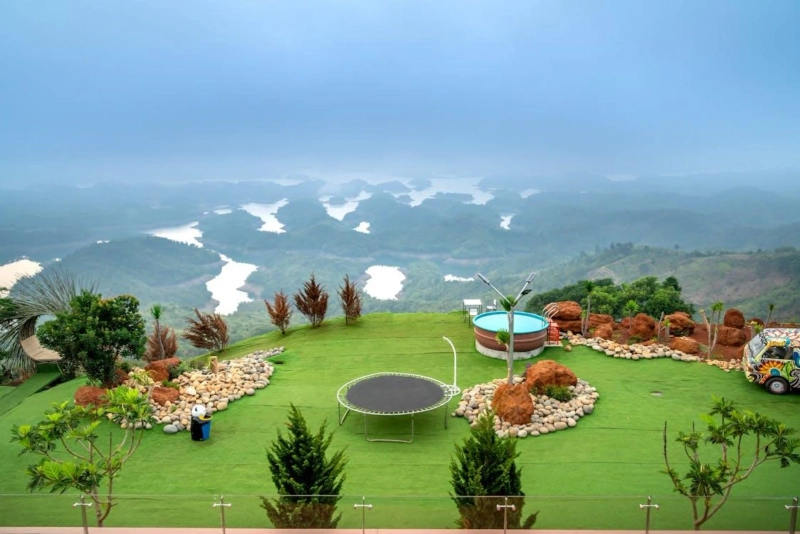In the heart of Canada's bustling cities and serene landscapes, a question emerges: How do we balance the relentless march of progress with the imperative of environmental and social responsibility? This question is particularly pertinent when considering the adoption of artificial turf in Canada, a choice facing many communities, sports facilities, and private homeowners. So, without further ado, read on as we explore the impacts of artificial turf, weighing its pros against the cons.
Artificial Turf in Canada: A Growing Trend
The use of artificial turf around the world, especially in Canada has been on the rise in recent years, driven by its appealing low maintenance requirements, durability, and the promise of year-round green spaces. Unlike natural grass, artificial turf does not require watering, fertilizing, or mowing, making it an attractive option for many businesses and individuals in areas facing water scarcity or where maintaining lush, green lawns is particularly challenging due to harsh weather conditions.
Environmental Considerations
The environmental impact of artificial turf in Canada is a critical aspect of the ongoing debate. Proponents highlight its role in water conservation, an important consideration in areas prone to drought or water restrictions. By eliminating the need for irrigation, it significantly reduces water usage, aligning with environmental goals. Additionally, the absence of pesticides and fertilizers means a lower risk of harmful chemicals leaching into the groundwater, protecting local ecosystems.
However, it's essential to acknowledge the challenges. The production and disposal of artificial turf raise concerns about plastic use and waste. The industry has been proactive in addressing these issues, with many manufacturers’ now incorporating recycled materials and developing more sustainable disposal methods, reflecting a commitment to minimizing its environmental footprint.
Social Impacts and Community Engagement
The social implications of adopting artificial turf in Canada are equally important. On the one hand, synthetic fields can enhance community spaces, providing a reliable and accessible surface for sports and recreation regardless of weather conditions. This inclusivity fosters social cohesion, encouraging more active lifestyles among Canadians of all ages, thereby promoting community well-being.
On the other hand, it's crucial to ensure that these installations do not detract from the natural beauty or biodiversity of community spaces. Actively engaging with local communities to understand their needs and preferences is vital in this regard. By thoughtfully incorporating green design principles and earnestly seeking input from residents, cities can create multifunctional spaces that effectively balance the benefits of artificial turf in Canada with the preservation of natural landscapes.
Economic Advantages
Initial Cost vs. Long-Term Efficiency: Installing artificial turf requires a higher initial outlay compared to natural grass. However, it eliminates ongoing costs associated with watering, mowing, and fertilizing, making it cost-effective over time. This upfront investment leads to savings, proving economical for those willing to invest in long-term sustainability and reduced maintenance efforts.
Budget Reallocation for Public Services: The savings garnered from installing artificial turf enable public institutions to reallocate funds towards essential services. Schools and municipalities can enhance programs and services that directly benefit the community, such as improving educational resources or upgrading public facilities. This financial shift supports community development.
Enhanced Durability and Reduced Maintenance: Artificial turf's resilience to heavy use and adverse weather conditions means less downtime for repairs and maintenance. This durability ensures that community spaces are always available for recreational and social activities, fostering continuous engagement and promoting healthier, active lifestyles among community members.
Water Conservation Impact: By eliminating the need for irrigation, artificial turf plays a crucial role in water conservation. This is beneficial in regions prone to drought or where water resources are scarce. Adopting artificial turf significantly contributes to environmental sustainability efforts and aligns with global initiatives aimed at reducing water usage and preserving valuable water resources.
Environmental Sustainability: Though concerns exist about artificial turf's environmental impact, ongoing improvements in recycling and material sourcing are addressing these common issues. Using recycled materials in specialized turf production and developing eco-friendly disposal methods are steps toward minimizing the ecological footprint of artificial turf installations.
Community Engagement and Active Lifestyles: Artificial turf provides a reliable platform for a wide range of activities, encouraging community engagement and active lifestyles. Its year-round accessibility supports regular physical activity, contributing to the overall health and well-being of the community members in Canada and fostering a sense of belonging and community spirit.
Aesthetic Consistency and Appeal: Beyond the many practical benefits, artificial turf offers aesthetic consistency, maintaining a green and vibrant appearance throughout the year, regardless of climate conditions. This visual appeal enhances public spaces, making them more inviting and usable for the community, improving the overall quality of urban and suburban environments in the country.
Looking Toward the Future
As we look to the future, the role of artificial turf in Canada is likely to evolve further. Innovations in materials and installation techniques promise to reduce environmental impacts and improve the aesthetic and functional qualities of synthetic surfaces. Ongoing research and development are crucial in this journey, as is the dialogue between manufacturers, communities, etc. Together, these stakeholders can forge a path that honors the dual objectives of ongoing progress and responsibility.
In sum, the conversation around artificial turf in Canada is much more than a choice between natural and synthetic. It's about reimagining our relationship with the environment and with each other. By embracing the benefits of artificial turf while addressing its challenges, Canada can set a global standard for sustainable, community-focused development. This requires collaboration, innovation, and a steadfast commitment to the values that define us as a nation: protecting Mother Earth.


